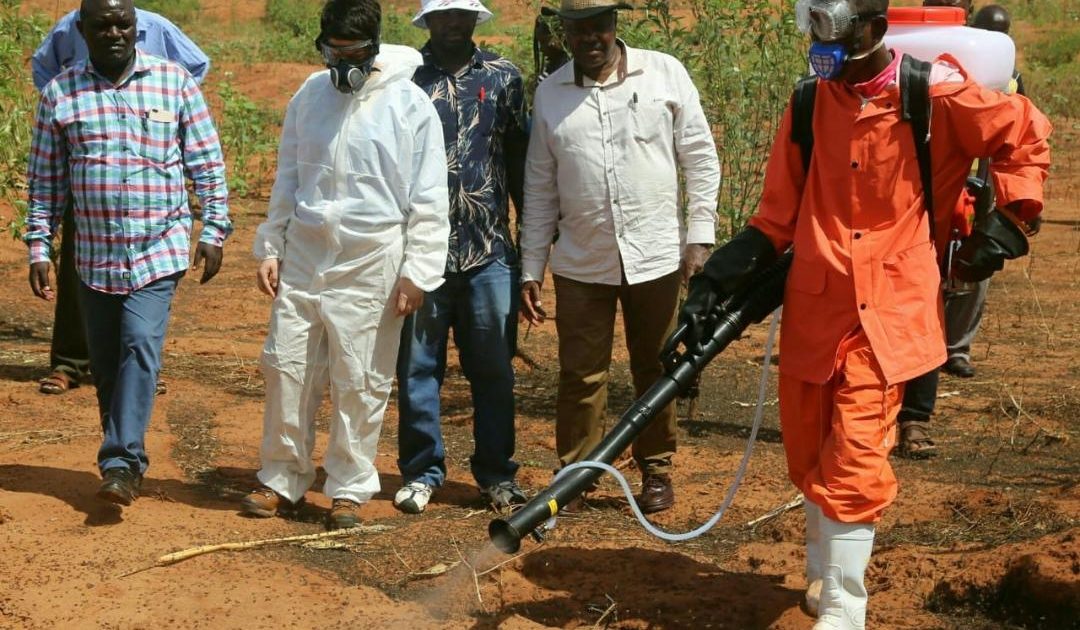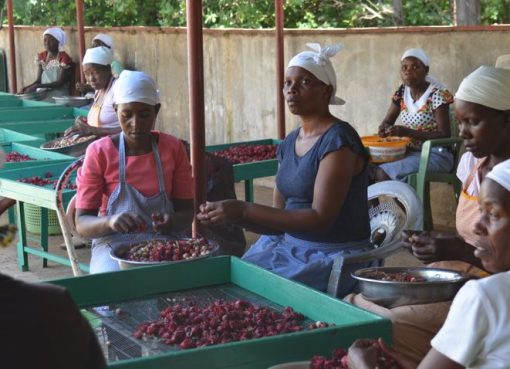As the plague of locusts threaten food security in Kitui County, the county government has trained volunteers to support motorized spraying to eradicate the hatched nymphs.
Speaking in Kitui on Monday, the Deputy Governor, Dr. Wathe Nzau said the dreaded pests that have wreaked havoc in the semi-arid county over the last one month descending on crops and pastureland have left eggs that were hatching.
“We have embarked on motorized spraying to augment the efforts of the national government’s aerial spraying. We are targeting the hatched nymphs. This will ensure that we eradicate the locusts completely from our county,” said Dr. Wathe.
“Desert locusts live for about three months. After a generation matures, the adults lay their eggs which, under the right conditions, can hatch to form a new generation up to 20 times larger than the previous one,” he said.
Dr. Wathe said that in this way, desert locusts could increase their population size exponentially over successive generations if they were not contained at the nymph stage.
He said that the invasion and subsequent multiplication of the desert locusts if not contained would trigger widespread devastation to crops and pastures in a region that was already extremely vulnerable to famine.
Commenting on the urgency of emergency resources to counter the locusts’ invasion, Dr. Wathe said that as the insects continued to multiply, the need for aid could rise considerably, especially if more aggressive control measures weren’t implemented soon.
The UN’s Food and Agriculture Organization (FAO) estimated one swarm in Kenya to be around 2,400 sq km meaning it could contain up to 200 billion locusts, each of which consume their own weight in food every day.
Huge locust swarms in East Africa were the result of extreme weather swings and could prove catastrophic for a region still reeling from drought and deadly floods.
The locust invasion is the biggest in Ethiopia and Somalia in 25 years, and the biggest in Kenya in 70 years, according to the FAO.
The Climate Prediction and Applications Centre (ICPAC) in a statement has said that the locusts were the latest symptom of extreme conditions that saw 2019 start with a drought and end in one of the wettest rainy seasons in four decades.
The erratic weather of 2019 and the decade prior has already severely eroded the capacity of families to bounce back from unexpected crises.
The Kyuso Ward MCA, Stephen Musili said that some farmers were lucky as their crops had already matured or were harvested by the time the locusts arrived, but herders continued to face difficulties as vegetation for their animals is consumed by the locusts.
The government has set aside Sh.230 million for the campaign of spraying locusts spearheaded by the Ministry of Agriculture, Livestock, Fisheries and Cooperatives.
By Yobesh Onwong’a





